Wasit Wetland Center, designed by X Architects, is located in Wasit Wetland Reserve in Sharjah, UAE. This humble building, primarily a visitor center, partially conceals itself in between the coastal sand dunes, sinking underground, and merges in harmony with the rest of the ecosystem. This is one of the few projects that fosters environmental stewardship, even at the cost of its visibility and form, staying loyal to its goals and commitment.
Aligning with the client’s vision, the X Architects designed the Wasit Wetland Center with a similar intention of promoting bio-diversity and leaving minimal impact on the site, simultaneously providing a spatial experience encouraging observation and learning. This minimalistic structure has also bagged the esteemed Aga Khan Award for Architecture for the 2017-2019 cycle.
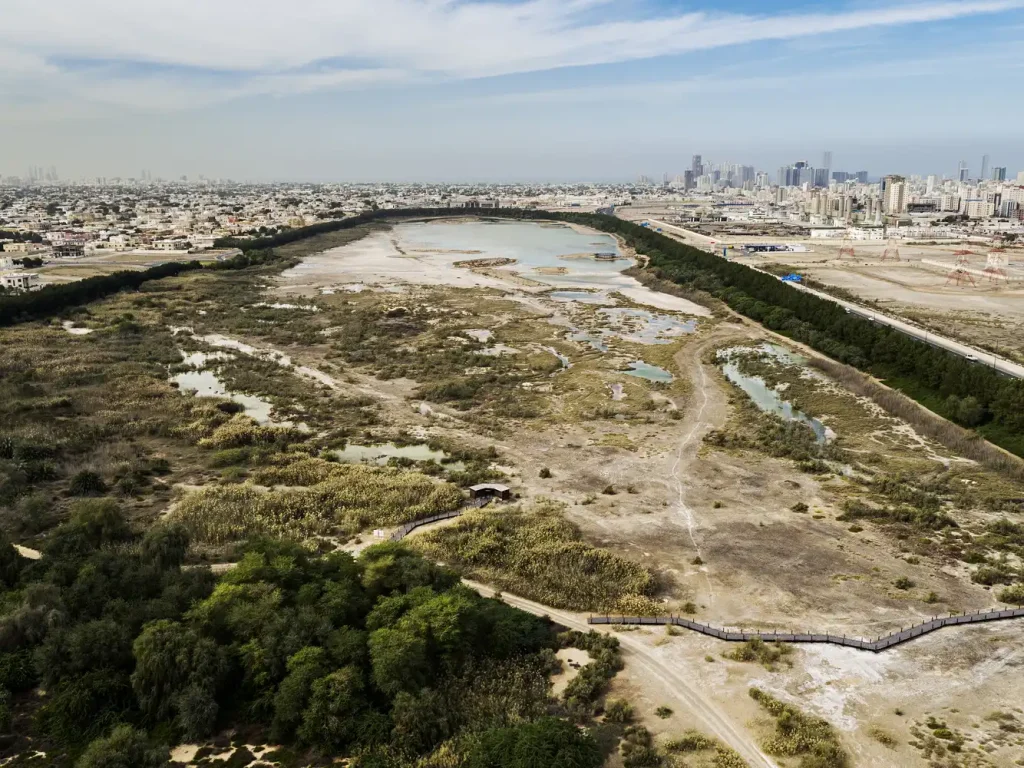
The Story of Wasit Nature Reserve
While forests are celebrated as the ‘lungs of the planets’, the wetlands that purify water and recharge the groundwater are left underappreciated as the ‘kidneys of the earth’. Wetlands form a significant part of the ecosystem and play an important role in catering to the flora and fauna as a habitat.
The Wasit Wetland Reserve was originally a tidal lagoon that the renowned ambitious shoreline expansion projects of UAE pushed inland to almost 15 kilometers from the coastline. Aligning with the nation’s effort to promote sustainability, the wetland was announced as a National Protected Area in 2004, followed by its establishment as a Natural Reserve in 2007 by an Emiri Decree.
In the meantime, the wetland had already developed into a waste dumping site from a tidal lagoon. After the announcement, as a part of Sharjah’s Environment and Protected Areas Agency’s (EPAA) initiative to conserve this protected area and reinstate it, several measures were implemented in 2005.
The ecosystem, spread over an area of 4,500,000 square meters, boasts rich, diverse landscape features, including mudflats, salt marshes, lakes, coastal sand dunes, reed beds, and woody thickets. Unfortunately, these unique features suffered from being a rubbish and waste water dumping site.
It was essential to recover these to ensure the sustenance of the ecosystem. Firstly, the debris was disposed of from the site, and the soil was recovered from chemical intoxication. Subsequently, the area was subjected to afforestation, regaining plenty of trees. Succumbing to EPAA’s perseverance, the massive area was reinstated, bringing back around 30,000 migratory birds and serving as a habitat for over 350 species again today.

Factors Driving the Form Development: X Architects, their Approach and Concept
The core concern was to ensure that the intervention wouldn’t distract the birds or scare them away from the site. Owing to this, leveraging the topography of the site, the architects tucked the form of the buildings partially under the sand dunes, completely merging with the landscape.
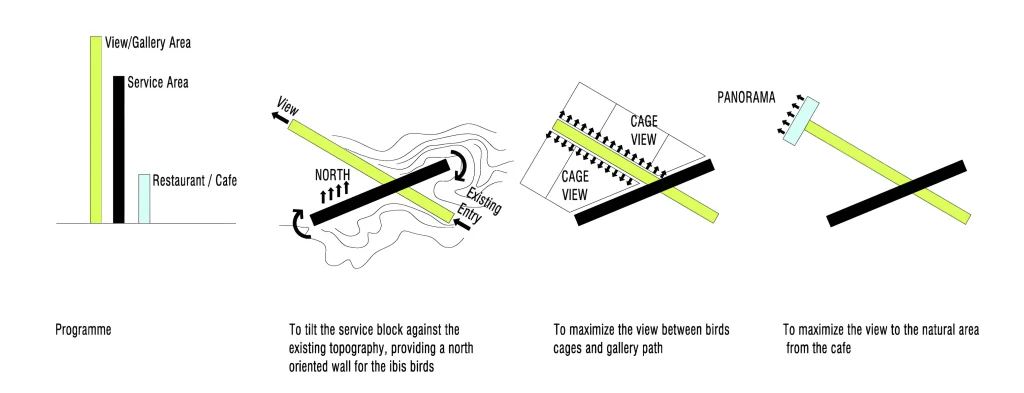
The main idea behind the development of the visitor center was to provide an uninterrupted and smooth experience at the gallery for visitors, facilitating bird-watching while simultaneously leaving the birds undisturbed. To achieve this, the architects worked with a simple yet efficient concept,t as depicted in the conceptual diagram above.
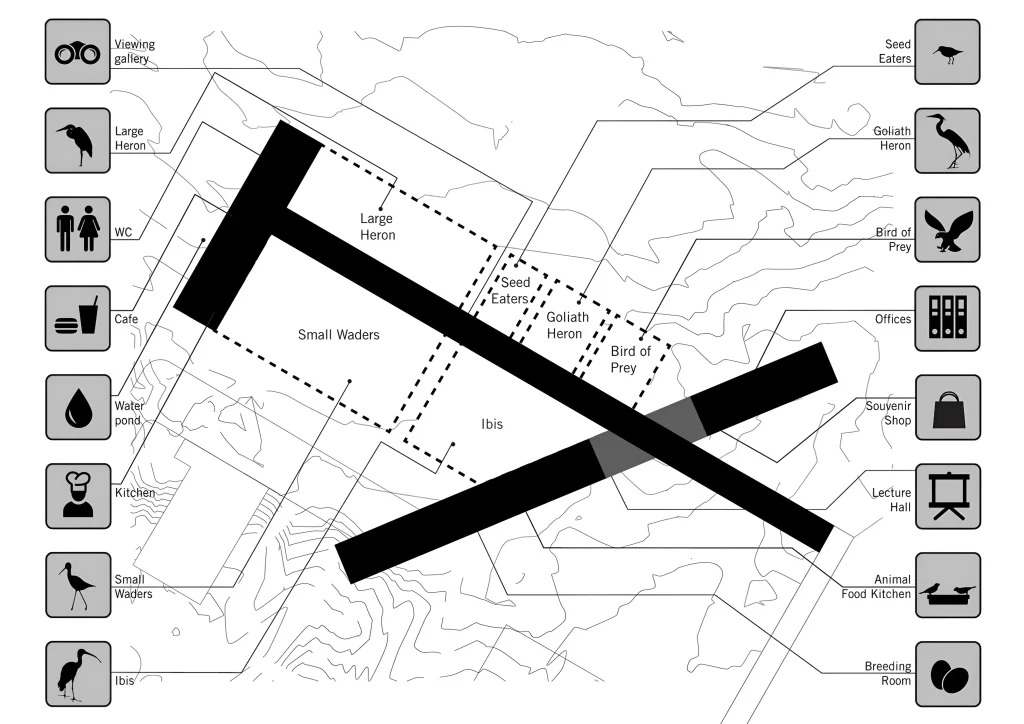
The architects choose to work with three long, lean, low-height cuboids to minimize their footprint on the site while maximizing the façade area. These cuboids are laid on the site, forming bird pockets on both sides along the central spine.
An Overview of the Spatial Components and Interiors
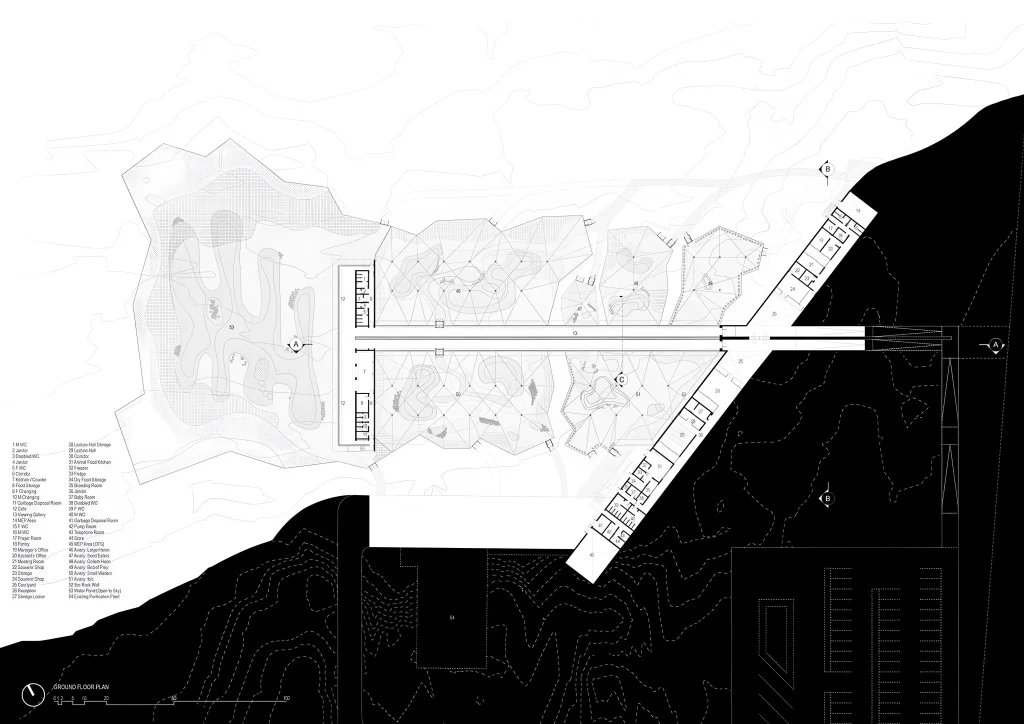
The three major components, the gallery, the service and souvenir zone, and the café, are distributed across the three linear interlocking buildings of the visitor center in addition to the six bird aviaries adorning both sides of the gallery building.
The visitors enter the building via a ramp to the sunken structure. Upon entering through the relatively dark ramp, the visitors are welcomed by a well-lit lobby at the oblique intersection of the two buildings featuring a skylight.
From the lobby, the linear space splits into two gallery spaces overlooking the bird aviaries. The central support that splits the interiors also displays vivid information about the wetlands, flora, and fauna. The floor of the gallery is lower than the actual ground level outside in the aviaries, enabling the visitors to sit on the façade sill and enjoy watching the birds at their level.
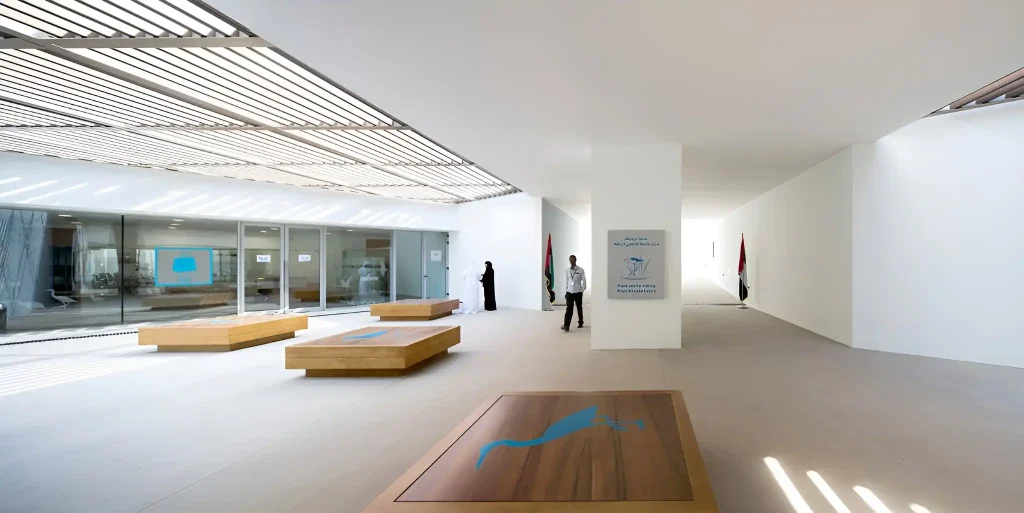
The long gallery culminates in a café opening up to the nature reserve, capturing a panoramic view. On their way back, the visitors are drawn to the souvenir shop, which is obliquely visible when they return from the galleries. Not just the form, even the interiors are quite minimal, allowing the visitors to focus outside on the birds.
The Structural System of Wasit Wetland Center
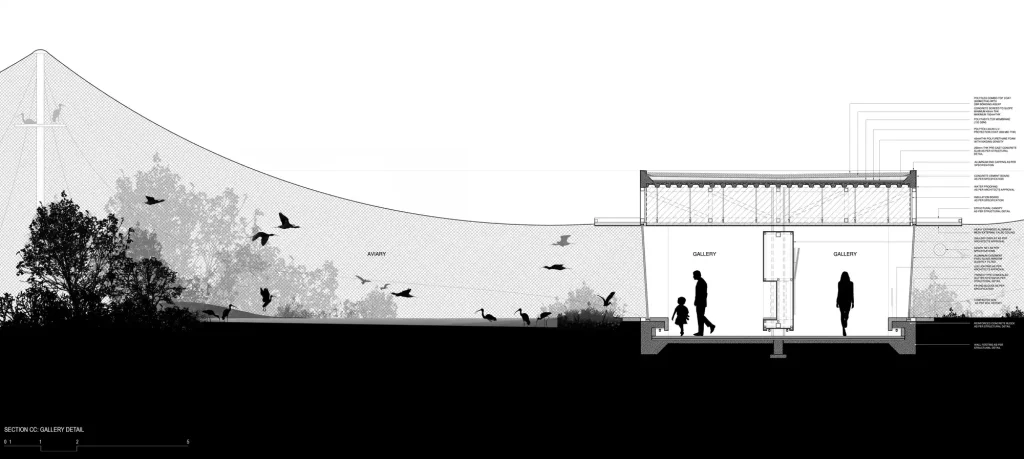
Choosing a structural system wisely was necessary to enable obstruction-free viewing from the galleries and camouflage the structure in its surroundings. The Architects opted for a flat roof supported by a steel truss system with a central load-transferring vertical support, eliminating the need for columns on the facades breaking the view.
If you would like to design structures similar to Wasit Wetland Center, which is subjected to several constraints and challenges yet reaching its maximum potential, learn with PAACADEMY. Attend workshops at PAACADEMY to learn from the industry’s best experts how to use advanced parametric design tools, AI in design workflows, and computational design in architecture.
At the Core, Environmental Stewardship and Sustainability
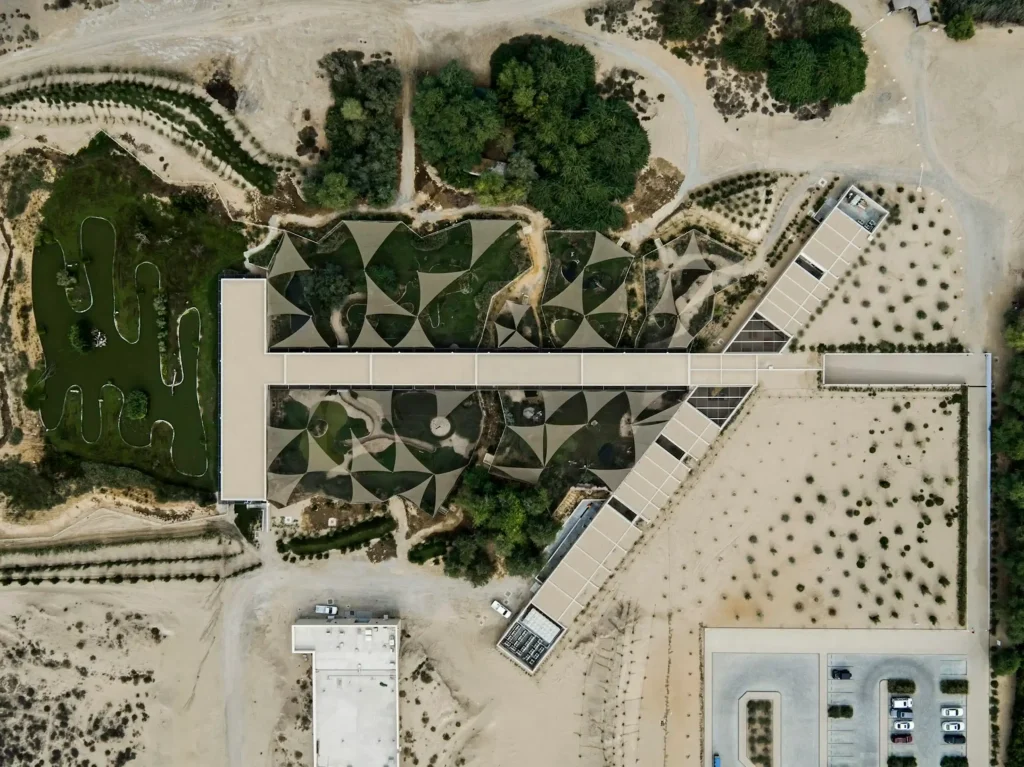
Every design decision exhibits the architect’s commitment to environmental conservation and nurturing the flora and fauna in the wetland. From the color of the roof to the triangular sand-colored fabric that shades the aviaries, mimicking the dunes on site, everything blends with the site in a bird’s eye view.
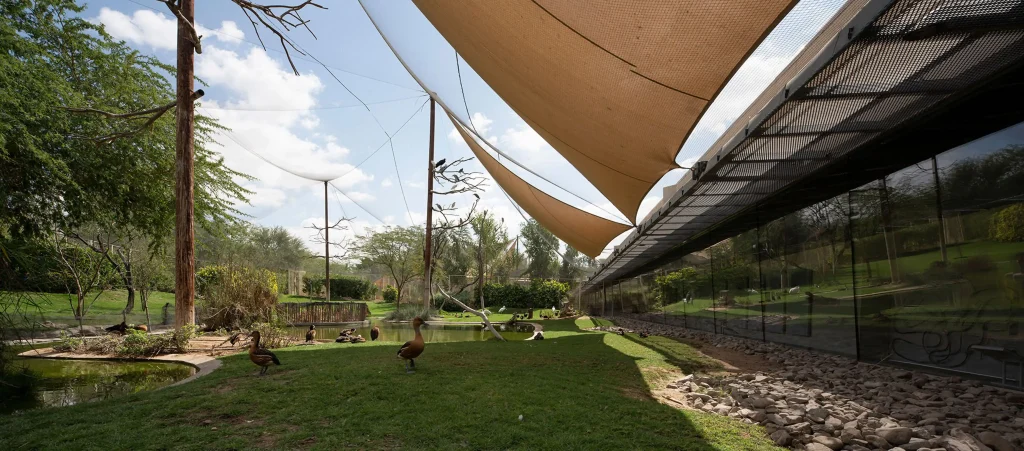
The slight tilt in the facades ensures that the sun glare is reduced and reflections are optimized for both the birds and the visitors in order to allow the visitors to see the birds in close proximity and to ensure that the birds don’t get distracted by the visitors.
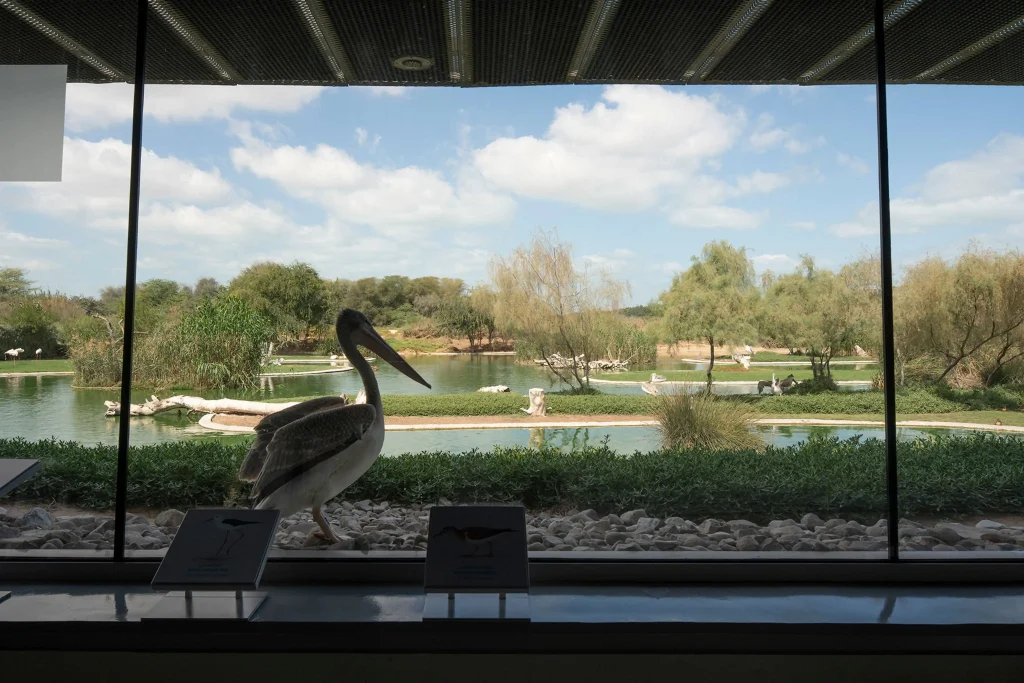
The roof is insulated with several layers of materials including 45mm thick polyurethane foam, polytex liquid for U.V. protection, and polyflex top coat. The rainwater is harvested from the roof and directed to the landscape via hidden channels of spouts. The six aviaries are designed uniquely to cater to the needs of the birds featuring recycled materials emphasizing their focus on environmental conservation and sustainability.
Wasit Wetland Center, Promoting Ecotourism
While UAE’s economic diversification efforts are eminent, the nation sees Tourism as a reliable strategy with the tourism sector accounting to up to approximately 12% of the total annual GDP as of 2024. Sharjah earned its name as the Capital of Arab Tourism in 2015, following the completion of the Wasit Wetland Center in the same year.
The center and the reserve assert the city of Sharjah as a sustainable city, sensitive to the environment in addition to displaying the myriad of indigenous flora and fauna the city boasts, attracting ornithologists, bird watchers, researchers, and the common public, opening the possibilities of ecotourism as a sustainable alternative to economic diversification plans of the Nation.
“The Wasit Wetland Centre stands out as a remarkable, indeed unique, collaborative project combining architectural excellence with a deep commitment to ecological imperatives” Jury Citation – Aga Khan Award for Architecture.
Project Details:
Project Name: Wasit Wetland Center
Architect: X Architects, Dubai, UAE
Client: Environment and Protected Areas Authority, Sharjah, United Arab Emirates
Location: Sharjah, United Arab Emirates
Photography: Nelson Garrido, Cemal Emden
Video: AKDN (Aga Khan Development Network)
Drawings: X Architects




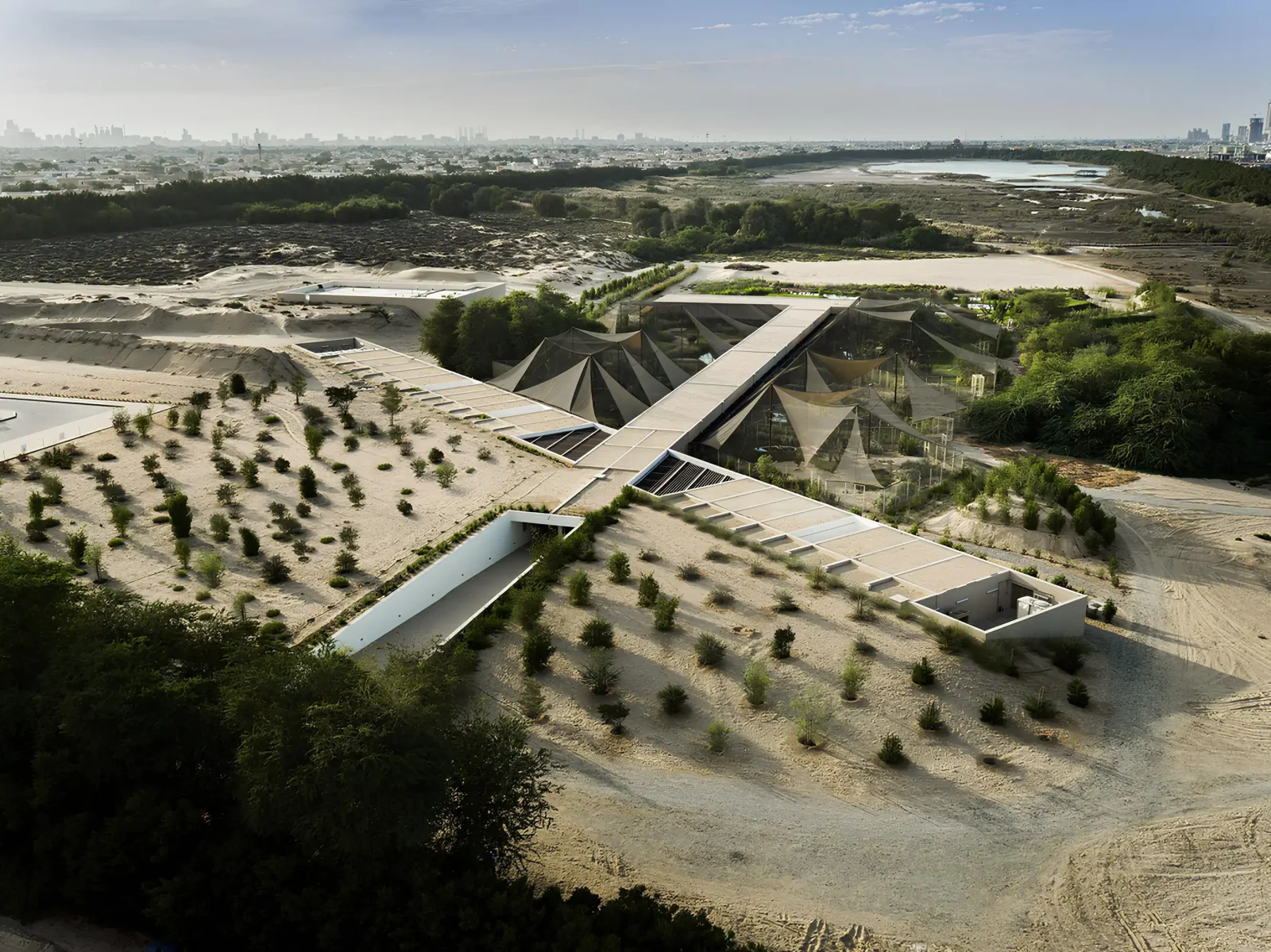

























Leave a comment